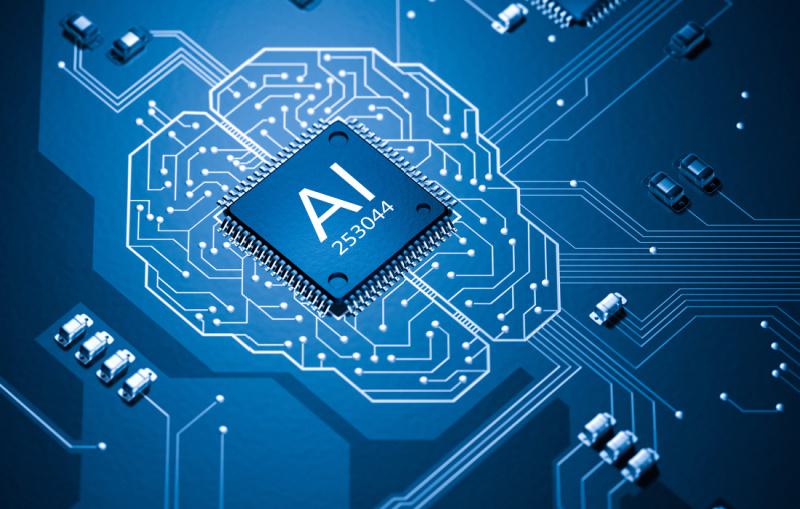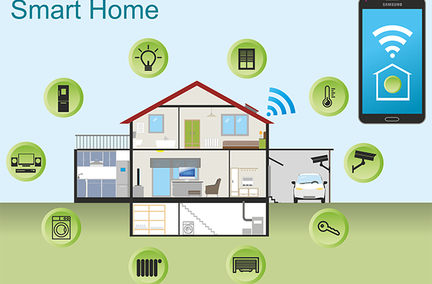Why Fiber Internet Is a Must for Our Smart AI Future
Mar 14, 2024 | Technology News

Look around, and you’ll see artificial intelligence (AI) rapidly spreading to almost every aspect of modern life: from the smart assistants on our smartphones to the recommendation algorithms streaming our entertainment. But as AI’s capabilities grow, a powerful force is accelerating demand for fiber optic internet: the technology’s ravenous appetite for huge amounts of bandwidth, far more than existing broadband infrastructure can handle.
Whether powering real-time AI applications or crunching massive training data sets, AI workloads are hugely data-intensive. They require blazing-fast connectivity, extremely low latency, and robust reliability that traditional broadband simply can’t match. Only the virtually unlimited bandwidth and low-latency data transmission of fiber optic internet can keep pace.
Why Fiber Is AI’s Superhighway
Today’s AI algorithms, like the natural language models behind ChatGPT and writing applications, need to ingest and analyze staggering amounts of data to generate human-like responses. Image- and video-based AI takes even more bandwidth. Downloading gigabytes of information instantly is easily handled over fiber’s multi-gigabit connectivity but would be painfully slow over traditional broadband, such as cable, DSL, or satellite internet.
Immersive technologies like AI-enhanced virtual reality demand real-time streaming of ultra-high-definition spatial data that would choke a typical broadband connection. Fiber optic internet ensures smooth delivery of that fire hose of data for fluid experiences in the metaverse, simulations, and digital twins.
Computer vision and video analytics are among AI’s fastest-growing applications, powering everything from self-driving cars to medical imaging and smart city infrastructure. Outdated broadband technologies such as cable internet can barely handle these high-bandwidth 4K video streams. Fiber is the only solution allowing real-time analysis and processing in the blink of an eye.
As more connected devices like IoT sensors, cameras, and autonomous systems go mainstream, AI algorithms and machine learning models step in to decypher the massive influx of data. Tackling these big data challenges in real time requires ultra-high-speed fiber optic connectivity to aggregate and process the copious data streams.
A Smart, AI-Powered Future Requires Fiber
Some of the most transformative applications of AI are still on the horizon, and they will lean heavily on fiber internet:
Autonomous Vehicles: Even though self-driving cars aren’t tethered to a fiber connection while on the road, they rely on AI algorithms to dynamically process sensor data and make split-second driving decisions. Continuous real-time data transfer between the vehicle and centralized AI computing hubs strung together by fiber optics is critical for safe operation, requiring fiber network infrastructure’s low latency.
Edge AI: As connected AI moves closer to end users via edge computing, fiber is essential to backhauling heavy data loads between distributed micro data centers and cloud hubs for scalable resource sharing.
Cloud AI / Cloud Computing: As enterprises rapidly adopt cloud AI services, whether hosted by hyper scalers like AWS and Azure or private data centers, fiber optic network performance is crucial for transferring training data, running models, and retrieving insights.
Healthcare AI: From AI-driven diagnosis to remote robotic surgery to precision medicine customized through population data analysis, next-gen AI healthcare relies on fiber to seamlessly transfer medical imaging, records, and real-time video across providers.
AI-Powered Automation: Whether industrial robots, automated checkout lines, or robotic process automation software in the back office, AI automation across industries is reliant on fiber’s stable connectivity and low latency for remote control and monitoring.
Smart Cities: Intelligent infrastructure like traffic management systems, energy load balancing, public safety monitoring, and more will harness vast AI capabilities made possible through city-wide fiber optic networks aggregating and backhauling torrents of connected IoT sensor data for processing.
Fiber Is Remaking the Connected World
While these AI-driven innovations are on the horizon, fiber internet is already reshaping how we interact, work, and experience entertainment:
Faster Home Broadband: As smart home entertainment like virtual reality gaming and 4K streaming continue to grow in popularity, fiber-to-the-home (FTTH) deployments bring multi-gigabit bandwidth and low latency to residential users.
Work from Anywhere: High-speed, rock-solid fiber connectivity makes remote work a seamless reality—whether videoconferencing, transferring large data sets, accessing cloud resources, or using AI tools like ChatGPT.
Immersive Experiences: Virtual concerts, augmented reality shopping, and ultra-realistic gaming all rely on the lightning-fast data delivery of fiber networks to sync spatial data across viewing devices for fluid experiences.
AI Collaboration: Features like noise cancellation, live transcription, and automated captioning in remote meeting solutions are AI-driven innovations requiring robust fiber internet performance.
Getting Future-Ready for AI
It’s a two-way street. Fiber optic networks are enabling us to tap into AI’s increasingly ubiquitous presence just as much as AI’s growing demands are accelerating fiber broadband buildouts. Every aspect of the AI transformation fueling smarter homes, businesses, healthcare, and entertainment is powered by fiber, so more and more high-speed internet service providers, such as Gateway Fiber, are expanding the fiber optic footprint so more homes and businesses can enjoy the benefits of AI.
In the years ahead, fiber internet won’t be a nice-to-have but an absolute must. AI capabilities and adoption will only continue exploding as generative AI automates content creation and large language models redefine knowledge work.
Fiber optic cables will weave the connectivity fabric, keeping us plugged into these emerging technologies. Smart cities and vehicles will be inoperable without low-latency fiber networking infrastructure. And every sector — from healthcare to finance — will lean heavily on fiber to power automation, analysis, and organizational AI capabilities.
Perhaps most importantly, the downstream effects of today’s AI breakthroughs have yet to be fully realized. Fiber broadband is future-proofing us for that next wave of transformational applications and use cases we can scarcely imagine today.
While AI’s demands may drive the expanded deployment of fiber optic networks, fiber internet is the key enabler to unlock a new era of hyper-connected living, working, and thriving powered by smart, autonomous, and predictive capabilities. Is your home or business ready with future-proof fiber optic connectivity? The AI-powered world won’t wait.
This Article Powered by AI
As a demonstration of the power of AI and its many applications, this article was originally written by an AI writing engine but then edited by a human. AI has come a long way over the past few years, even over the past few months, but so far, it can’t replace people entirely. And we hope it never does. No matter how sophisticated AI gets, people will always be involved. Ultimately, AI is here to serve us, not the other way around. Our challenge is to find the best way to use the power of AI to further mankind, and that involves helping it reach its full potential via a fiber optic network.





